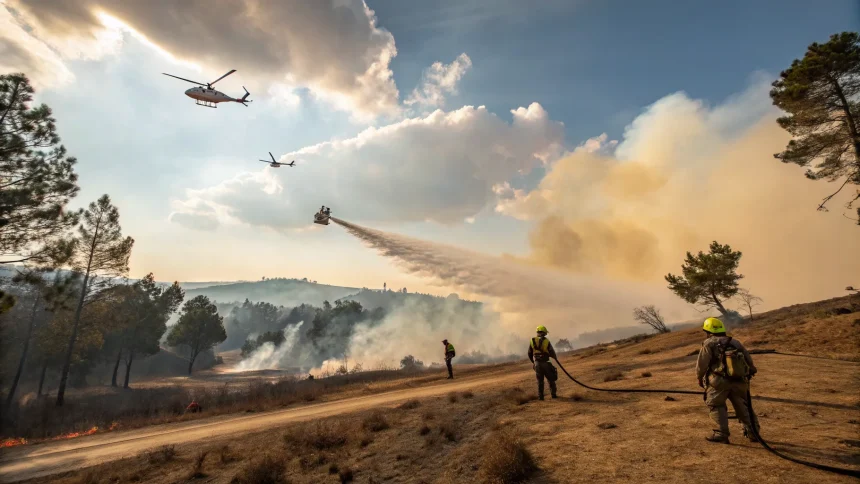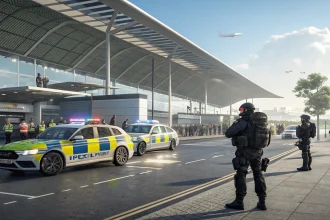Israel’s firefighting service has mobilized a large-scale response to contain an active fire, with 163 ground crews and 12 aircraft currently engaged in firefighting operations.
The substantial deployment indicates the severity of the blaze, though specific details about the fire’s location, cause, and extent of damage remain limited in official statements. The combined air and ground approach suggests authorities are implementing a comprehensive strategy to control the flames.
Aerial and Ground Response
The firefighting effort includes a significant aerial component, with a dozen aircraft supporting ground operations. These aerial assets likely include water-bombing planes and helicopters equipped to drop fire retardant or water on difficult-to-reach areas.
On the ground, the 163 crews represent one of the larger mobilizations of Israel’s firefighting resources in recent operations. These teams typically consist of professional firefighters equipped with specialized vehicles and equipment designed for wildfire containment.
Regional Context
Israel faces seasonal wildfire challenges, particularly during hot, dry summer months when vegetation becomes highly flammable. The country’s Mediterranean climate creates conditions where fires can spread rapidly, especially in forested regions and areas with dense underbrush.
The Israeli firefighting service has developed specialized tactics for the region’s unique terrain, which includes mountains, forests, and urban-wildland interfaces where communities border natural areas.
Fire management in Israel often involves:
- Rapid deployment of ground teams to establish containment lines
- Strategic use of aircraft for initial attack and support of ground operations
- Coordination with military and emergency services for large-scale incidents
Response Capabilities
The current deployment demonstrates Israel’s firefighting capacity, which has been enhanced following major fire events in the country’s history. After devastating fires in 2010 and 2016, Israel invested in expanding its aerial firefighting fleet and improving coordination between various emergency response agencies.
International cooperation has also become a standard component of Israel’s fire management strategy, with neighboring countries often providing mutual aid during major incidents. However, the current statement did not indicate whether international assistance had been requested for this particular fire.
Weather conditions, which play a critical role in fire behavior and containment efforts, were not specified in the official statement. Wind speed and direction, temperature, and humidity levels all factor into firefighting strategies and the potential for fire spread.
As containment efforts continue, authorities will likely provide updates on evacuation orders, property damage assessments, and the expected timeline for bringing the fire under control.









